Today we travelled to Sky City, and no, we were not visiting the Jetsons. Sky City is the ancestral home of the Acoma Pueblo situated on the top of a mesa about 15 miles off I-40. Visitors are allowed to visit Sky City during certain periods in the summer season, but are only allowed on the mesa if accompanied by a guide. There is a museum and Cultural Center at the base of the mesa, and tours leave from there.
The Acoma Pueblo has a very distinctive style of pottery, one that we have admired since our first visit, so we were very glad that it was open today because it was closed over the entire previous weekend for a festival. We arrived in time to catch some lunch at the cafe before our tour and were delighted to find such good food. Mike had the Green Chile Pork Stew with fry bread, probably the best of the trip so far, and Tami had the blue corn enchiladas that were quite different than yesterday’s enchiladas, but also very good.
The tour included a fair amount of history and also frequent stops to see pottery available by many of the locals. It was obviously a bit of a sales tour, but that was okay because we saw a lot of variety and had a chance to talk with the artists. Tami had fun learning about their techniques and materials and dreams of one day getting back to doing some pottery.
Sky City has been continuously occupied by the Acoma since around 1100 AD. The encounters with the Spanish Conquistadors and early Catholic Church were particularly brutal and devastating to the Acoma, and encounters with the US government were obviously not advantageous to them either. The museum had many current member stories and they were fun to read. Many of the older members clearly find the loss of the language as one of the greatest tragedies since their history is all oral, but they are beginning to teach the young people their language in preschools now.
Sky City has no water, sewage, or electricity. Water must be brought up to the homes, and we noted many portapotties located throughout the community. There were also many new solar-powered green composting toilets, too. Other than the solar toilets, it is a very traditional looking place, albeit with some modern touches (since people do live there).
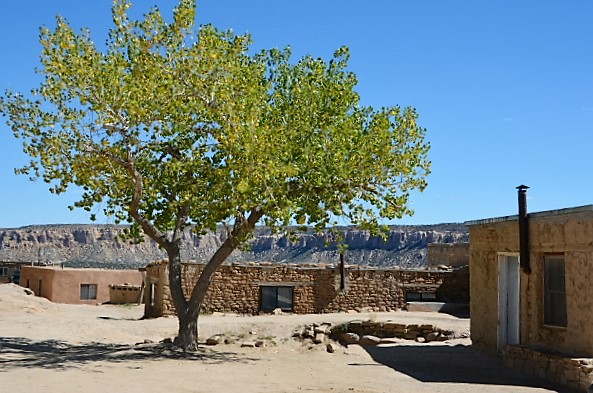
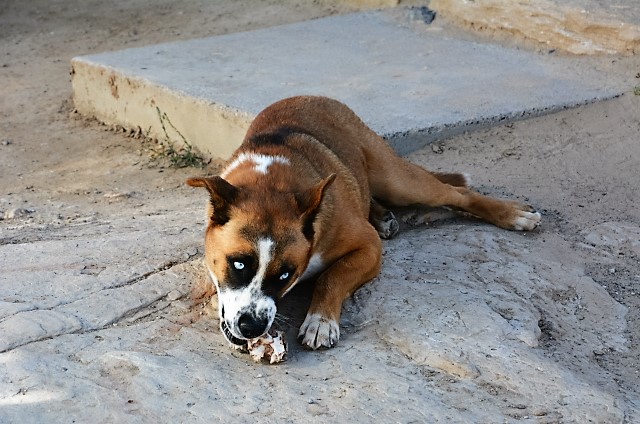
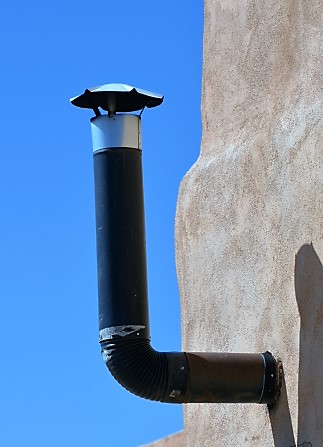
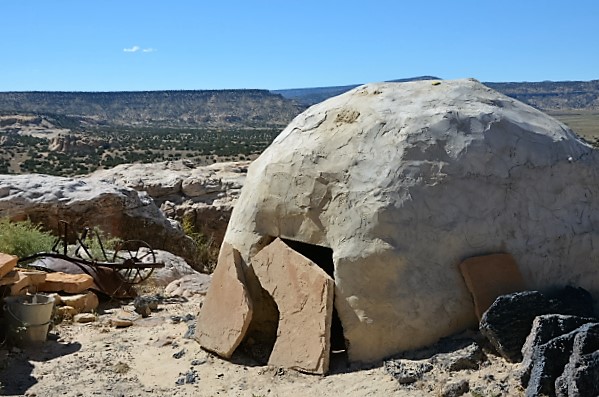
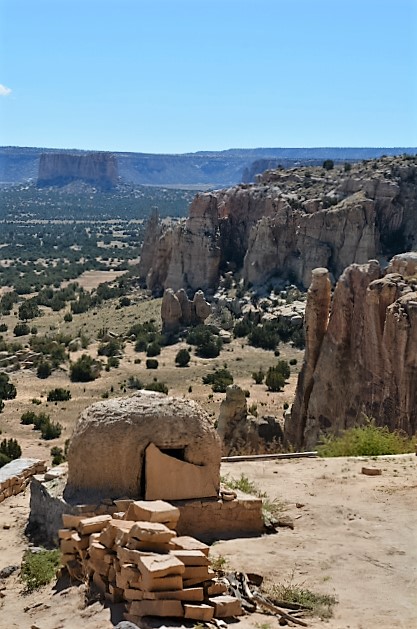
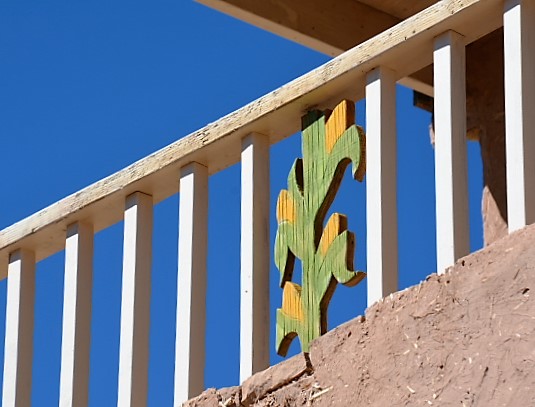
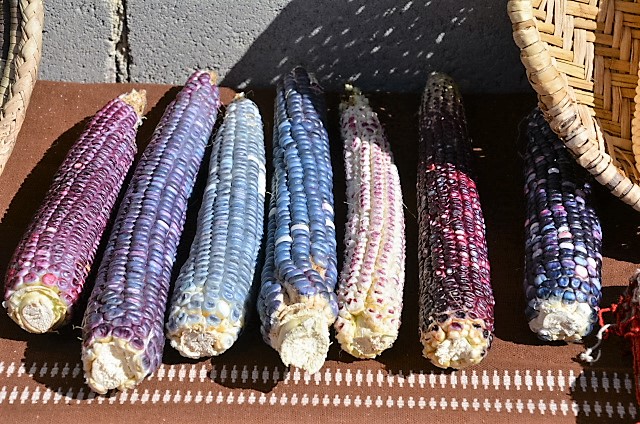
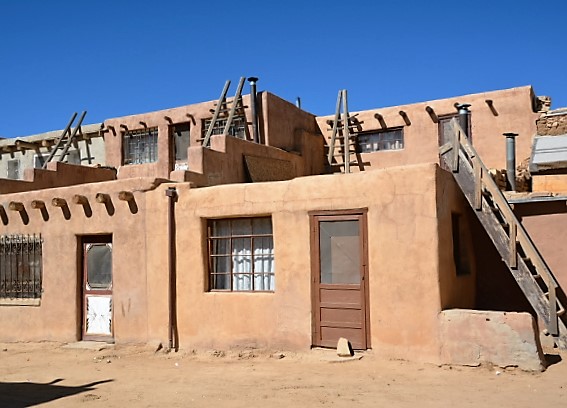
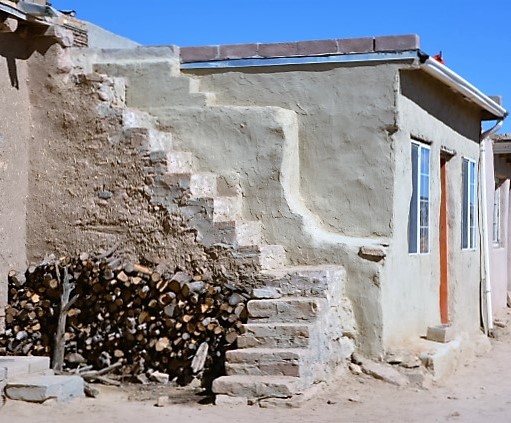
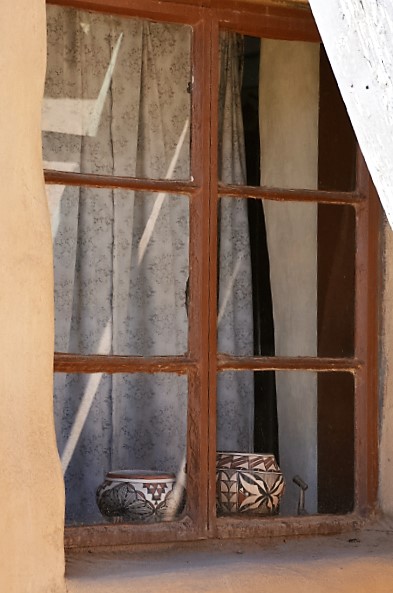 In many places there were traditional ladders leading to upper stories, but in a few places there were white ladders. We were told the white ladders led to kiva entrances. The kivas are religious gathering places and generally only men are allowed in. Interestingly, the kivas seem to be about the only thing the men are allowed to own, as it is a matriarchal society and women own the houses, and just about everything else. Our female guide said something to the effect of “Yay us!”
In many places there were traditional ladders leading to upper stories, but in a few places there were white ladders. We were told the white ladders led to kiva entrances. The kivas are religious gathering places and generally only men are allowed in. Interestingly, the kivas seem to be about the only thing the men are allowed to own, as it is a matriarchal society and women own the houses, and just about everything else. Our female guide said something to the effect of “Yay us!”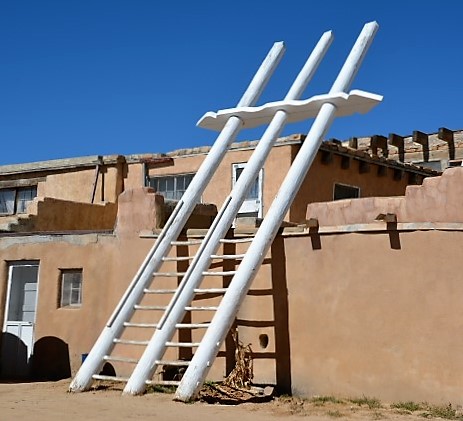
When we were done, we elected to walk back down to the Cultural Center rather than take the bus which had brought us up. This meant taking the stair case built and sometimes carved into the rock down the cliff. Before the road was built to the top, this was the only way up or down, and dates back centuries. In some places it was VERY steep, but we took our time and made it without falling. Yay us!

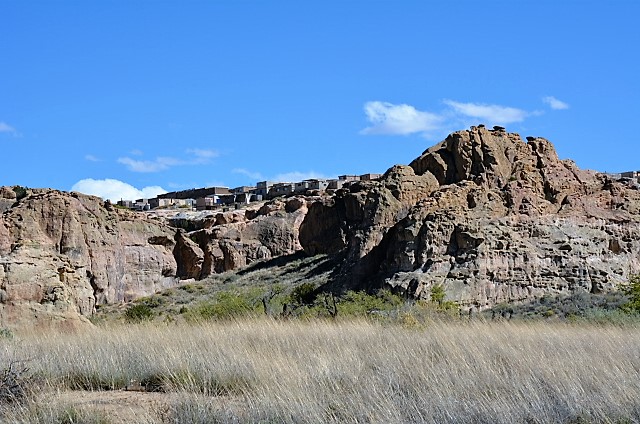
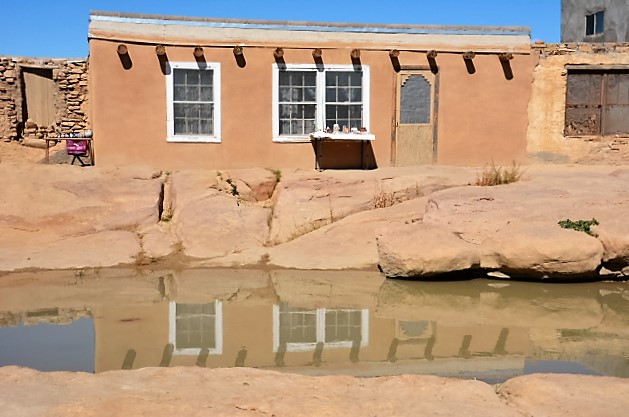
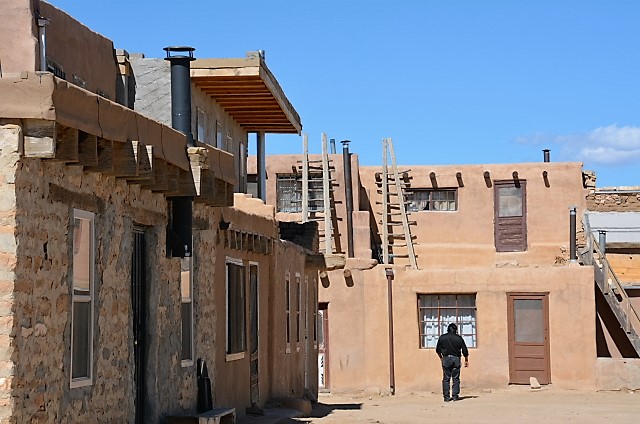
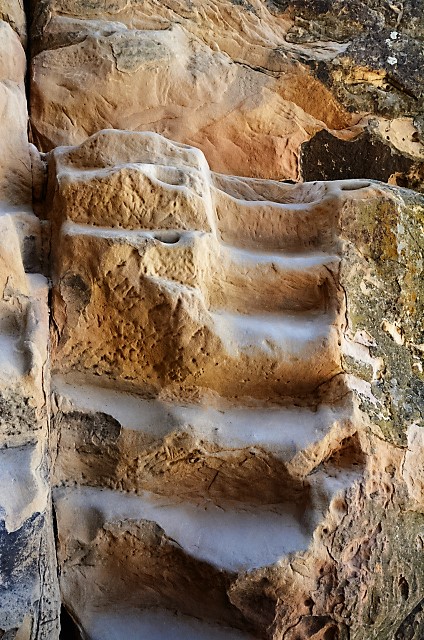
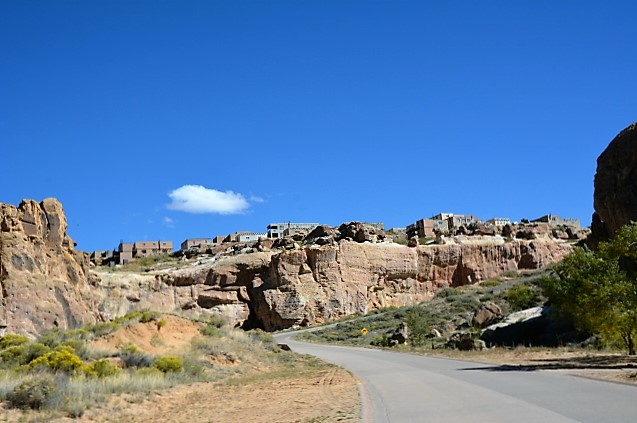
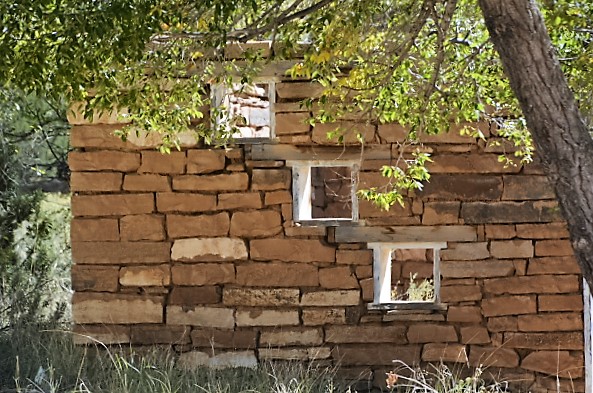
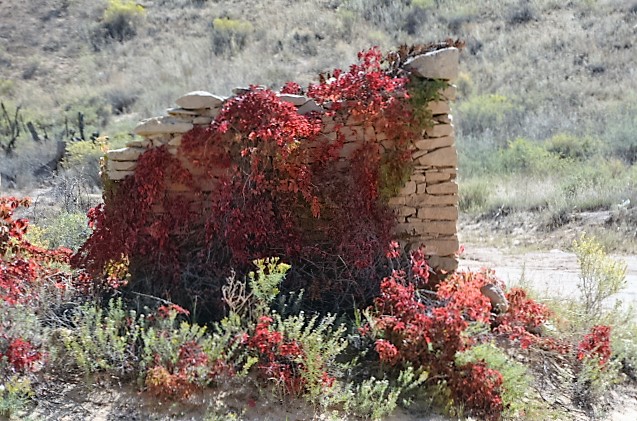
Loving the description of your trip. It sounds like you are both having a great time. BUT, if you are going to talk about your food, PLEASE show us some pictures!
Sorry about that, we always forget until after we start eating. Put a delicious plate in front of us and pictures is NOT the first thing we think about.